John Dee (1527-1609)


John Dee is an excellent example of how early modern intellectuals could mix conventional interests with occult, even necromantic, pursuits. The desire to acquire more knowledge than was available from academic studies could lead natural philosophers into some very strange activities. Yet, however, suspect such practices might seem to the orthodox clergy, whether Catholic or Protestant, practitioners of the occult sciences attracted patronage from monarchs and aristocrats. Dee was, for many years, a prominent figure at the court of Queen Elizabeth and also, more briefly, at the court in Prague of the Emperor Rudolf II.
John Dee's father was a London merchant. Dee attended Chantry School at Chelmsford in Essex, 1537-42, and then studied at St. John's College, Cambridge, 1542-6. He took his B.A. in 1545 and then taught Greek. He became a Fellow of Trinity College upon its foundation in 1546 and took his M.A. in 1548. He then studied at Louvain University, 1548-51, with the great mathematical mapmakers, Gemma Frisius and Gerard Mercator. From this early stage in his career, Dee was acting as tutor to the great, and he appears to have taught mathematics to several leading English Protestant aristocrats. Dee was offered a professorship at the University of Paris in 1551, and in 1554 a position as lecturer on mathematics at Oxford. He declined both positions.
Dee helped to make mathematics widely available in England, broadening the number of competent navigators. He edited the Billingsley translation of Euclid in 1570 and added to it a famous preface in justification of mathematics. Dee was an early admirer of Copernicus, whose work he studied, whether or not he himself became a Copernican, as his friend Thomas Digges did. Among his publications, worthy of note in this respect is his Parallacticae commentationis praxosque (1573), which consists of trigonometric theorems for determining the parallax of the new star of 1572.
His mathematical expertise made Dee an important figure in Tudor geography. From about 1551 to 1583, Dee was the advisor to English voyages of discovery, to the Northeast and to the Northwest. This was the period when the Muscovy Company opened relations with Ivan IV, and the beginning of the search for the Northwest Passage. Among the navigators whom Dee prepared were Richard Chancellor, Stephen and William Borough, Martin Frobisher, Humphrey Gilbert, John Davis, and Walter Raleigh, and he was possibly an advisor to Drake's celebrated voyage. His Perfect Arte of Navigation was originally intended as part of a larger work, a general history of discoveries. While consultant to the Muscovy Company, Dee assembled geographic and nautical information and prepared charts for navigation in the polar regions. Dee's influence was apparently transmitted to the Netherlands where it helped form Dutch cartography in its so-called golden age.
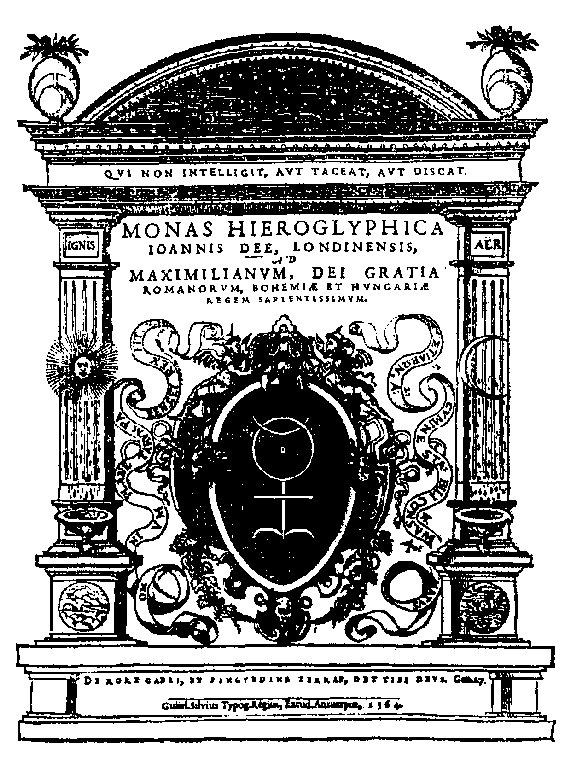
From the outset, Dee was attracted to the occult sciences. At Cambridge, he was associated with a group of students interested in alchemy, including Richard Bostocke, who was to be the first to defend Paracelsus in English. As early as 1550, in Paris Dee expounded the mathematical-magical theory revived by Ficino. During the reign of Mary Tudor, he was imprisoned for casting the Queen's horoscope, a politically dangerous activity, and his first book was the Propaedeumata aphoristica (1558), a book of astrology. He appears to have been associated even before her accession with Elizabeth Tudor, and the treasonable horoscope may have been linked to her. He seems to have been responsible for selecting an auspicious day for her coronation. His first major work was the highly cryptic work of occult philosophy, the Monas hieroglyphia (1564). Dee travelled to Presburg to present a copy of the Monas to Maximilian II, to whom he had dedicated the work. In his preface to Euclid, he already complains of having a reputation as a conjuror.
Dee was a fairly tolerant Protestant, comfortable among Catholics apart from Jesuits, whom he regarded with considerable suspicion. He exchanged the pension granted to him by Edward VI for the Rectorship of Upton-upon-Severn in Worcestershire in 1553 and also obtained the Rectorship of Long Leadenham in Lincolnshire in 1566, but he never served either cure and lost the incomes in about 1580. It is not clear that he was ever ordained. He did try to serve when Elizabeth appointed him in 1592 as Warden of the Collegiate Church (now the cathedral) in Manchester, after unsuccessful attempts to obtain a lucrative post nearer to London. However, it should be emphasized that pious Englishmen regarded Dee as a conjuror, if not worse. His time in Manchester was not a success.
Dee was perhaps prematurely suspected as a conjuror, because of his astrology and alchemy, but in the early 1580s he actually became one. Dee was frustrated by the limits of human knowledge and sought more powerful sources of information, namely angels. After fruitless searching for a suitable scryer, who could act as the conduit for angelic communications, Dee became associated from about 1582 with Edward Kelly in occult and alchemical projects. Dee's angel-magic was related to that of Ficino and Bruno, but holding converse with spirits was no more welcome in Protestant England than in Tridentine Catholic lands. During his time in Prague, Dee was not far from condemnation by the Catholic Church.

Dee's experiments with angelic consultations were an extension of his mathematics, astronomy and astrology, rather than a weird contradiction. His interest in magic, alchemy and astrology is often portrayed in older histories of science as an embarrassing aberration, the great man being gulled by the deplorable Kelley. However, it is clear that many of his contemporaries shared such interests, and it was not the credibility of these pursuits but their religious orthodoxy that was questioned. Even Kelley is now attracting scholarly interest, especially in relation to his successful career in Europe after his breach with Dee.
Subsequent students of the occult sciences in England, such as Richard Napier and Elias Ashmole, had a great deal of respect for Dee's accomplishments and this interest in his work led to the salvaging of many of his dispersed manuscripts, now in the British Library and the Bodleian Library, Oxford. Some of these have been published by modern occultists, but many still await scholarly editions. Excerpts from his diaries have long been available, but the relatively popular edition published recently is far fuller than anything previously available in print and it seems likely that a scholarly edition will soon be produced. Since Frances Yates re-emphasized the contribution of the occult tradition to modern culture and knowledge, especially in her book on Giordano Bruno, historians and literary scholars have paid renewed attention to such figures as Dee, even if they are a little more cautious than Yates was.
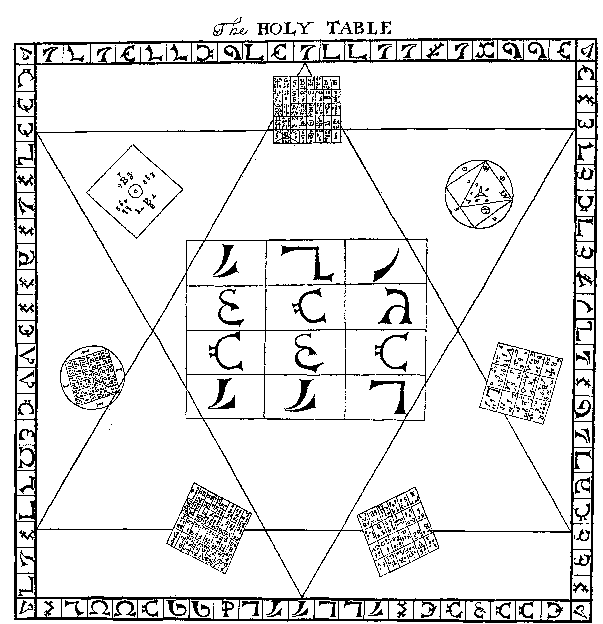
SELECT BIBLIOGRAPHY
A true & faithful relation of what passed for many yeers between
Dr. John Dee (a mathematician of great fame in Q. Eliz. and King James
their reignes) and some spirits: tending (had it succeeded) to a general
alteration of most states and kingdomes in the world. His private conferences
with Rodolphe Emperor of Germany, Stephen K. of Poland, and divers other
princes about it. The particulars of his cause, as it was agitated
in the Emperors court; by the Popes intervention: his banishment, and restoration
in part. As also the letters of sundry great men and princes (some whereof
were present at some of these conferences and apparitions of spirits:)
to the said D. Dee. Out of the original copy, written with Dr. Dees own
hand: kept in the library of Sir Tho. Cotton, Kt. Baronet. With a
preface confirming the reality (as to the point of spirits) of this relation:
and shewing the several good uses that a sober Christian may make of all.
By Meric. Casaubon, D.D. London : printed by D. Maxwell for T. Garthwait,
and sold at the little north door of S. Pauls, and by other stationers,
1659.
microfilm: Early English books, 1641-1700; 25:5
C. H. Josten, "A Translation of John Dee's 'Monas Hieroglyphica' (Antwerp, 1564), with an Introduction and Annotations," Ambix 12 (1964) 192
Graham Yewbrey, "A redated manuscript of John Dee", Bulletin of the Institute of Historical Research 50 (1977) 249-253
Julian Roberts and Andrew G.Watson, eds., John Dee's
Library Catalogue (London, 1990)
Oversize Z 997 .H288 D44 1990
Edward Fenton, ed., The Diaries of John Dee (Charlbury, Oxon., 1998)
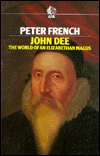 Peter
J. French, John Dee: the World of an Elizabethan Magus (London,
1972) the standard life, now a little dated
BF 1598 .D36 F73
Peter
J. French, John Dee: the World of an Elizabethan Magus (London,
1972) the standard life, now a little dated
BF 1598 .D36 F73
Francis Yates, Theatre of the World, (Chicago, 1969) PN 2589 .Y3
Charlotte Fell Smith, John Dee (1527-1608) (London, 1909)
Richard Deacon, John Dee (London, 1968) Q 143 .D35 D4
Walter I. Trattner, "God and Expansion in Elizabethan England: John Dee, 1527-1583", Journal of the History of Ideas 25 (1964) 17-34
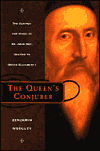 Benjamin
Woolley, The Queen's Conjuror: The Science and Magic of Dr. John Dee,
Adviser to Queen Elizabeth I (New York, 2001) a fairly popular
biography, but one informed by the latest scholarship
Benjamin
Woolley, The Queen's Conjuror: The Science and Magic of Dr. John Dee,
Adviser to Queen Elizabeth I (New York, 2001) a fairly popular
biography, but one informed by the latest scholarship
Nicholas H.Clulee, "John Dee and the Paracelsians", in Reading the Book of Nature: The other side of the Scientific Revolution, ed. Allen G. Debus and Michael T. Walton (Kirksville, MO, 1998) 111-132
Nicholas H. Clulee, "Astrology, Magic, and Optics: Facets of John Dee's Early Natural Philosophy", Renaissance Quarterly 30 (1977) 632-680
Nicholas Clulee, John Dee's Natural Philosophy: Between Science and Religion (New York, 1988) the standard work on Dee's philosophical positions BF 1598 .D5 C58 1988
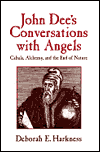 Deborah
E. Harkness, John Dee's Conversations with Angels: Cabala, Alchemy,
and the End of Nature (Cambridge, 1999) BF 1598 .D5 H37
1999 the most scholarly work on his angel-magic [plenty of
mystical stuff around too, by true believers in "Enochian magic"]
Deborah
E. Harkness, John Dee's Conversations with Angels: Cabala, Alchemy,
and the End of Nature (Cambridge, 1999) BF 1598 .D5 H37
1999 the most scholarly work on his angel-magic [plenty of
mystical stuff around too, by true believers in "Enochian magic"]
Deborah E. Harkness, "Managing an experimental household: The Dees of Mortlake and the practice of natural philosophy", Isis 88 (1997) 247-262
Deborah E. Harkness, "Shows in the Showstone: A Theater of Alchemy and Apocalypse in the Angel Conversations of John Dee (1527-1608/9)" , Renaissance Quarterly, 49 (1996) 707-737
Deborah E. Harkness, "Alchemy and eschatology: Exploring the connections between John Dee and Isaac Newton", in Newton and Religion, ed. James E. Force and Richard H. Popkin (Dordrecht, 1999) 1-15 BX 4827 .N48 N48 1999
P Rose, "Commandino, John Dee, and the 'De superficierum divisionibus' of Machometus Bagdedinus", Isis 63 (1972) 88-93
J P Zetterberg, "Hermetic geocentricity : John Dee's celestial egg", Isis 70 (1979) 385-393
 William
H.Sherman, John Dee: The Politics of Reading and Writing in the English
Renaissance (Amherst, MA, 1995) Z 8220.9 .S48 1995
William
H.Sherman, John Dee: The Politics of Reading and Writing in the English
Renaissance (Amherst, MA, 1995) Z 8220.9 .S48 1995
William H.Sherman, "John Dee's Brytannicae Reipublicae Synopsis: A Reader's Guide the Elizabethan Commonwealth", Journal of Medieval and Renaissance Studies 20 (1990) 293-315
William W.E. Slights, "The cosmopolitics of reading: Navigating
the margins of John Dee's 'General and rare memorials' ", in margins
of the text, ed. D.C. Greetham (Ann Arbor, 1997) 199-227
PR 21 .M29 1997
 Robert
Poole, "John Dee and
the English calendar: science, religion and empire", a paper preparatory
to his book, Time's Alteration: Calendar Reform in Early Modern England
(London, 1998)
Robert
Poole, "John Dee and
the English calendar: science, religion and empire", a paper preparatory
to his book, Time's Alteration: Calendar Reform in Early Modern England
(London, 1998)
M.T. Walton, "The geometrical Kabbalahs of John Dee and Johannes Kepler : the Hebrew tradition and the mathematical study of nature" in Michael T. Walton and Phyllis J. Walton, eds., Experiencing Nature: proceedings of a conference in honor of Allen G Debus (Dordrecht, 1997) 43-59 Not at ND
Kenneth J. Knoespel, "The narrative matter of mathematics: John Dee's preface to the 'Elements' of Euclid of Megara (1570)", Philological Quarterly 66 (1987) 27-46
Michael T. Walton, "John Dee's 'Monas hieroglyphica': Geometrical cabala", Ambix 23 (1976) 116-123